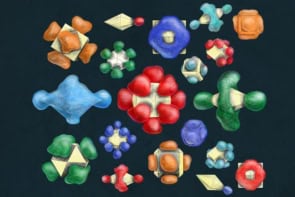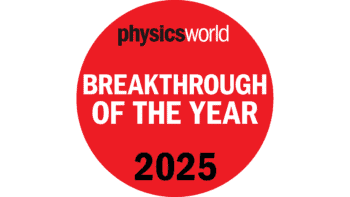Magnetic nanocrystals and semiconductor quantum dots can self-assemble into ‘metamaterials’ that could be useful in a range of applications, experiments in the US have shown. Franz Redl at the IBM TJ Watson Research Center in New York and colleagues at IBM, Columbia University and the University of New Orleans made the new materials with lead-selenium semiconductor quantum dots and iron oxide magnetic nanocrystals (F X Redl et al. 2003 Nature 423 968).

The properties of a metamaterial depend on the characteristics and interactions of the different nanocrystals used to make it. Metamaterials with improved magnetic, optical, electrical and mechanical properties could be used in applications as diverse as electric drives, motors and generators.
Redl and co-workers varied the sizes of the two different types of nanocrystal, as well as the processing conditions, to optimize the properties of the final ‘superlattice’ structure. Images taken with a transmission electron microscope confirm that two main types of superlattice were created (see figures 1 and 2). The best structures formed when the diameter of the lead-selenium quantum dots was 55% that of the iron oxide nanocrystals.
The average cubic unit cell in the superlattice was found to contain 8 iron oxide nanocrystals and 104 lead-selenium quantum dots, giving a total of about 4.5 million atoms per unit cell. Moreover, long-range order was seen in an area that extended up to 2 microns squared, whereas most metamaterials made in the lab so far have exhibited short-range order.
“We now are investigating magneto-optic phenomena in these materials to make new optical modulators and switches that could serve as building blocks for future telecommunications,” Redl told PhysicsWeb. “The unique combination of magnetic and semiconductor properties may also have an impact in magneto-electronics where both the charge of electron and its magnetic spin are exploited to carry out electronic operations.”




